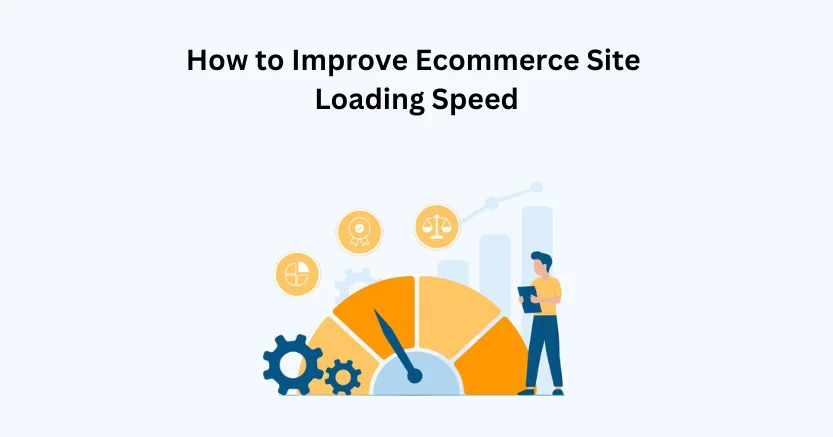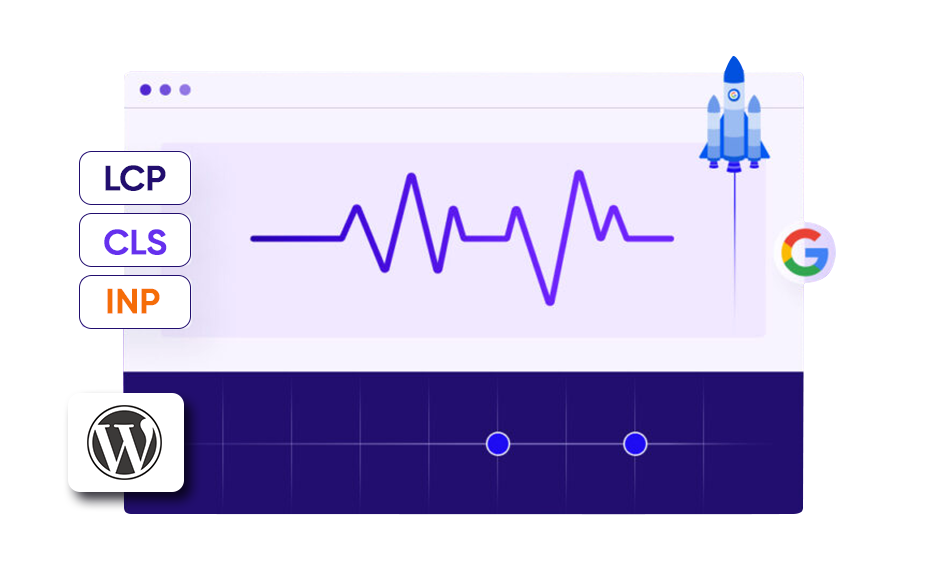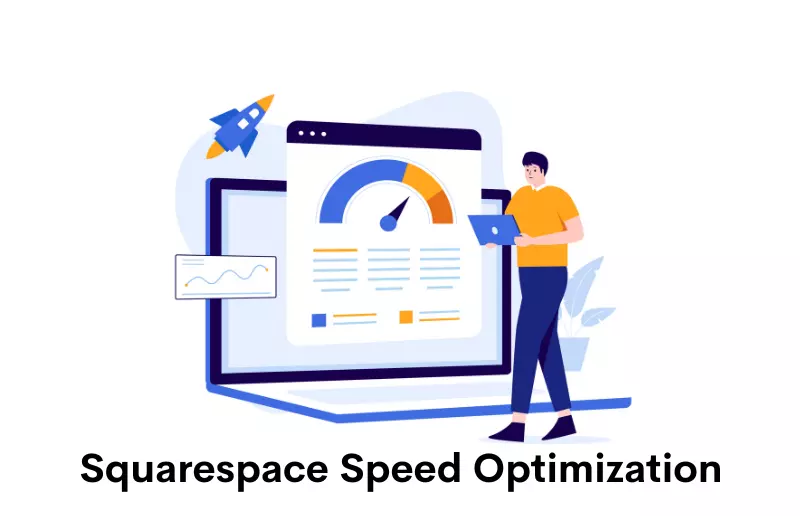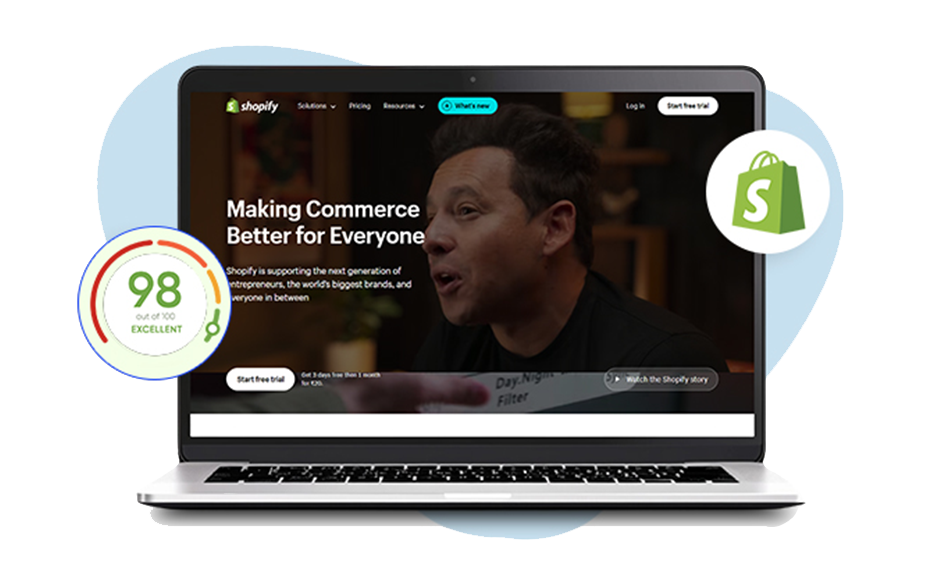Introduction
For a webpage to load quickly, it needs to go through three important steps:
Server Response Time/Time to First Byte: This is like how fast the server reacts when someone tries to open your webpage.
Page Load Time: This measures how long it takes for the whole webpage to show up.
Page Interactivity/Usability: This is about how quickly you can click or interact with things on the webpage.
Whether your store is on Shopify or BigCommerce, these three steps are important to achieve consumer satisfaction. If you are a Shopify user, optimizing Shopify core web vitals is a crucial step. Thus, in this blog, we will explore the top ways to speed up your site speed.
Optimize Your Shopfiy Store Speed for Fast Results
Boost Shopify Store NowTechniques To Enhance Site Loading Speed
Making your website faster is super important. Here are several simple methods to follow:
Use a Content Delivery Network (CDN)
Firstly, when you use a Content Delivery Network (CDN), it’s like having copies of your website stored in different places worldwide. These copies help people access your site faster because they connect to the closest one. It might cost a bit more, but using a CDN is a great way to make your website load faster and work better for visitors.
Choose The Right Web Hosting
Selecting the correct web hosting is really important for your website. There are different types: shared hosting, Virtual Private Servers (VPS), and dedicated servers. Shared hosting is the cheapest but might be a bit slow because you share resources with others. VPS is like a middle ground, good for websites with average traffic. Dedicated servers give you full control, but they are more expensive. You can also think about using cloud resources or serverless architecture for the best performance. These options ensure your website runs smoothly and meets its needs effectively.
Optimize Images
Improving your website’s speed is really important, and one way to do that is by making sure your pictures aren’t
too big. Even though pictures are great for keeping people interested, large ones can make your website work
more slowly. Luckily, there are tools like ImageOptim that can make the pictures smaller without making them
look bad. Also, using special HTML codes like
Count on Plugins
The speed of your website is influenced by how many plugins you have. Plugins are like tools that add special features, but they can use up your website’s resources. It’s a good idea to often check and remove plugins you don’t really need. Keep only the ones that are important, and make sure they are updated. Don’t just focus on having lots of plugins; make sure they are good quality, too. Try to avoid plugins that load too many scripts or ask for a lot of information from the website’s database. Quality is just as important as the number of plugins you have.
Combine JavaScript and CSS files
The way your website uses JavaScript and CSS files is crucial for how fast it works. If there are too many of these files, it means your website has to ask the server for each one separately. This can make things slow for users. But, if you combine these files into one, you can reduce the number of requests. Users will have a more enjoyable experience and your website will load faster as a result. It’s like packing your bags efficiently for a trip, making everything quicker and easier to find.
Using website caching
Using website caching is a smart move to make your site faster. Caching is like taking a snapshot of your website and keeping it until you make updates. This means that when people visit your site, it doesn’t have to start from scratch every time. It’s like having a quick-reference version that’s ready to go. For those using WordPress, there are handy plugins like W3 Total Cache or W3 Super Cache specifically designed to make this caching process easy and effective. These tools help your site run smoother by reducing the need to fetch information from the database every time someone opens a page.
Gzip Compression
Gzip Compression is a helpful tool that makes your files smaller, kind of like squishing them into a smaller size. This helps in two ways: it reduces the number of times your website has to ask the server for files (HTTP requests), and it also makes the server respond faster. So, when you use Gzip, it’s like sending zipped files to your computer, making things quicker. You can make this happen by adding a special code or using tools specifically made for Gzip. It’s a simple way to make the experience better for people using your website.
Organize Content (CMS)
For websites made with systems like WordPress that organize content (CMS), it’s super important to make the database work well. These systems keep stuff like comments and blog posts, making the database bigger and the site slower. To make it faster, you can use plugins made just for your platform, like WP-Optimize for WordPress. These plugins help clean up and organize the database, making sure your website runs smoothly and quickly. So, if you want your WordPress site to be fast, taking care of its database with tools like WP-Optimize is a smart move.
Optimize your web fonts
Web fonts, those cool styles for your text, are trendy but can slow down how quickly your page shows up. To make them less of a problem, go for modern formats like WOFF2. Also, only use the letters you need and pick the styles you like. These steps cut down on the extra stuff from web fonts and make your website work better and faster. So, by making smart choices with fonts, your website will perform even better and won’t keep your visitors waiting too long.
Fix 404 errors
It is really important to find and fix 404 errors for a smooth experience on your website. When a 404 error happens, it means the page is not there. You can use tools like 404 Redirected Plugin for WordPress to find and fix these errors. Check if these dead links still bring in visitors. If they don’t, you can leave them. But if they do, you might want to either redirect them or fix them, depending on how important they are. This helps make sure users don’t run into dead ends while exploring your site.

Want to read this blog offline?
No worries, download the PDF version
now and enjoy your reading later…
 Download PDF
Download PDF Reduce the number of redirects
It’s a good idea to reduce the number of redirects on your website to make it work better. Redirects are like detours for your website visitors, and having too many can slow things down. Check and review all the redirects on your page, and only keep the ones that are really necessary. Online tools can help you find and understand redirects quickly. By doing this, you make sure your website runs smoothly without unnecessary delays caused by too many redirects.
Prefetching techniques
Lastly, using prefetching techniques means getting things ready before a user asks for them. There are a few types of prefetching, like DNS-prefetching, Link Prefetching, and Prerendering. Even though it works well, it needs us to make accurate guesses about what users might do. This method is super helpful when we can predict what users will click on or need before they actually do. It’s like preparing snacks before your friends come over because you know what they like, making everything ready in advance for a smoother experience.
Conclusion
Therefore, these are the top eCommerce speed optimization techniques that you can choose from. By following the discussed strategies, you can really enhance your site loading speed. Additionally, for Webnode speed optimization or any other platform running site, you can use a speed optimization tool like Website Speedy, a speed booster SaaS-based tool specializing in improving eCommerce stores’ loading speed.
Thus, enhance your website speed with Website Speed and provide the best experience to your visitors.















































